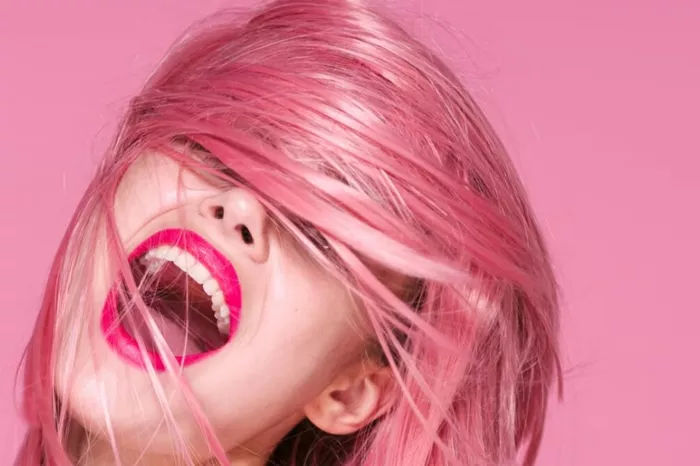In a world where remote work is becoming increasingly prevalent, many employers are loosening their restrictions on employee appearances, including tattoos, piercings, and hair colors. However, Emily Benschoter found herself in a predicament when she was informed that her new j obrequired her to conceal her vibrant pink hair. Determined to embrace her self-expression without sacrificing her position, the tenacious 29-year-old opted for an unconventional solution – wearing an assortment of wigs.
The Journey of Creative Adaptation:
For Benschoter, the idea of altering her hair color for a job that consumed 40 hours of her week was out of the question. As someone who takes pride in her unique identity, she exudes confidence with her pink hair. Thus, she improvised by adopting an array of eccentric wigs that served as her new head-turning accessory while at work.
The Unfortunate Encounter:
During the interview process for her front-of-house role in the hospitality industry, Benschoter interacted with her future employer remotely, thereby concealing her appearance. It was only when she contacted her manager prior to commencing her first shift that the issue of her the hair The color was raised. Encountering resistance, she reluctantly accepted the suggestion of wearing wigs to maintain her employment.
The Power of TikTok and Quirky Wigs:
Taking to social media platform TikTok under the username @emuhleeebee, Benschoter shared her unconventional work attire journey with the world. Her videos showcased an assortment of wigs, capturing the attention of thousands and even reaching millions of viewers. Within these displays, she humorously conveyed her discontent with her employer’s mandate, emphasizing her dissatisfaction with the necessity of disguising her vibrant hair.
A Metamorphosis of Empowerment:
Expressing her dismay at the imposed requirement, Benschoter firmly voiced her discontentment with her employer’s hair color bias. She regarded the situation as dehumanizing, emphasizing the superficiality of judging her capabilities based solely on her hair co lor. Refusing to bow to societal expectations, she proudly embraced the humorous approach of intentionally selecting outrageous wigs to spark conversations and challenge customer perceptions.
The Prevalence of Bias in the Workplace:
Gena Cox, an organizational psychologist, shed light on the presence of bias in corporate policy regarding employee appearances. She highlighted how companies often prioritize visual characteristics, conforming to preconceived notions of the “ideal employee” and yielding to the presumed biases of clients and customers Ultimately, strict guidelines regarding hair color are a manifestation of bias and indicate a lack of inclusivity within a workplace.
A Community of Shared Experiences:
Under Benschoter’s TikTok videos, an outpouring of solidarity emerged, with numerous users recounting their own struggles with conforming to hair and tattoo regulations imposed by their employers. Stories recounting the need to cover up with unconventional disguises or creative met hods of concealing non-traditional appearances populated The comment section, revealing the pervasive nature of these restrictive policies.
Conclusion:
Emily Benschoter’s refusal to conform to her employer’s hair color ban ignited a powerful message of self-expression and individuality. Through her captivating TikTok videos, she not only entertained viewers with her collection of whimsical wigs but also shed light on the inherent biases present within corporate policies. Her story serves as a rallying call for workplaces to reevaluate the importance placed on visual appearances and foster a culture that embraces diversity and inclusivity.

